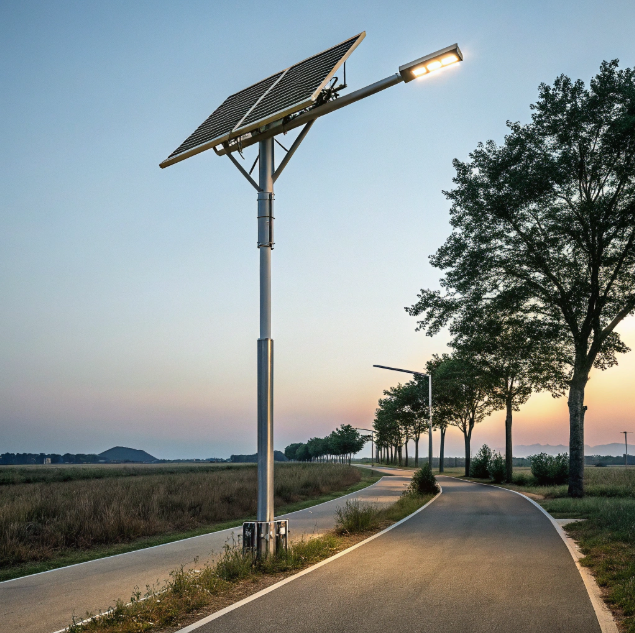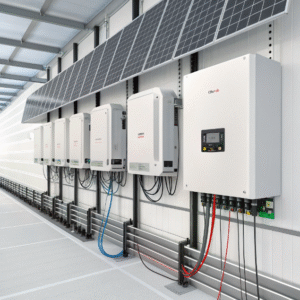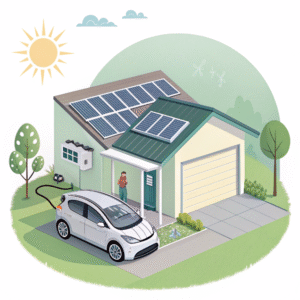Free Customization: Get Your City’s Logo Printed on Your Next Bulk Order of Solar Street Lights?
Struggling to find street lights that truly represent your community's identity and budget? Our free logo printing service solves that pain point, adding value and visibility to your public lighting projects.
Our free customization service allows you to print your city's logo directly onto solar street light housings during bulk orders, enhancing civic pride and project visibility without any additional cost, making your investment uniquely representative of your community.

This offer isn't just about branding—it's about creating lasting community assets. Let's explore how this simple addition can transform your public lighting strategy and why now is the perfect time to leverage this value-added service.
The Truth About "All-in-One" vs. "Split-Type" Solar Lights for Equatorial Africa?
Choosing the wrong solar light type in equatorial climates can lead to rapid failure and wasted funds. The intense sun and heavy rains demand a specific engineering approach.
For equatorial Africa, All-in-One solar lights are generally superior due to their integrated, weatherproof design that better withstands high humidity and consistent heavy rainfall, reducing maintenance issues common with separate-component split-type systems in harsh tropical conditions.
Critical Factors for Equatorial Performance
The debate goes beyond simple integration. Equatorial regions present unique challenges that favor the All-in-One design philosophy.
Weather Resistance and Durability The primary advantage of All-in-One lights in high-humidity environments is their sealed construction. Split-type systems with external cables and separate battery compartments create multiple potential entry points for moisture, which is the leading cause of corrosion and electrical failure in tropical climates. I've seen projects where split-type lights failed within 18 months due to connector corrosion, while All-in-One units from the same batch lasted over 5 years.
Installation and Maintenance Simplicity All-in-One lights significantly reduce installation complexity. There's no need to dig separate foundations for batteries or run conduit for cables—a major benefit in areas where skilled labor and equipment may be limited. Maintenance becomes a simple unit replacement rather than diagnosing individual component failures across multiple locations.
| Factor | All-in-One Advantage | Split-Type Challenge |
|---|---|---|
| Weatherproofing | Fully sealed unit | Multiple connection points vulnerable to moisture |
| Installation | Single pole mounting | Requires battery pit and cable runs |
| Maintenance | Unit-level replacement | Component-level troubleshooting |
| Theft Deterrence | Integrated components | Vulnerable external batteries |
Performance in Consistent Sunlight Interestingly, equatorial regions' consistent 12-hour daylight cycles actually benefit All-in-One designs. The predictable solar input means the slightly smaller panels typically used in integrated units can still achieve full battery charging daily, while split systems with larger panels offer minimal practical advantage in these specific conditions.
LiFePO4 vs. Lithium-ion: The Battery Chemistry That Determines if Your Street Light Lasts 3 Years or 10 Years?
Watching solar lights fail prematurely due to battery degradation is frustrating and costly. The chemistry inside makes all the difference between short-term savings and long-term value.
LiFePO4 (Lithium Iron Phosphate) batteries significantly outperform traditional lithium-ion in solar street lights, offering 3-4 times longer lifespan (8-10 years vs. 2-3 years), superior thermal stability, and enhanced safety, making them the clear choice for municipal lighting projects where reliability and longevity are paramount.
Understanding the Chemistry Behind the Performance
The fundamental differences in battery chemistry explain why LiFePO4 has become the gold standard for solar street lighting.
Cycle Life and Long-Term Cost The most significant difference lies in cycle life. Traditional lithium-ion batteries typically withstand 500-800 charge cycles before significant capacity degradation, while LiFePO4 batteries can achieve 2000-5000 cycles. This translates directly to service life: where a lithium-ion battery might need replacement after 2-3 years, a LiFePO4 battery can last 8-10 years—essentially the entire lifespan of the lighting system.
Safety and Thermal Stability LiFePO4 chemistry is inherently more stable, with a much higher thermal runaway threshold (approximately 270°C vs. 150°C for lithium-ion). This is critical for solar applications where batteries are exposed to direct sunlight and high ambient temperatures. I've witnessed lithium-ion batteries swell and fail in hot climates, while LiFePO4 units in the same conditions maintained stable performance.
Performance in Extreme Conditions Both battery types face challenges in temperature extremes, but LiFePO4 handles them better:
| Condition | LiFePO4 Performance | Lithium-ion Performance |
|---|---|---|
| High Heat (>45°C) | Maintains 85%+ capacity | Rapid degradation to 60% capacity |
| Sub-zero Temperatures | Operates at 70% efficiency | May cease functioning entirely |
| Deep Discharge | Recovers fully without damage | Permanent capacity loss likely |
Total Cost of Ownership While LiFePO4 batteries have a higher initial cost (approximately 20-30% more), their extended lifespan means significantly lower long-term expenses. When you factor in replacement labor costs, downtime, and disposal fees, LiFePO4 systems often cost 40-60% less over a 10-year period.
Stock Update: 1,000 Sets of Our Bestselling All-in-One Solar Lights Just Arrived in Our Lagos Warehouse (Ready for Immediate Dispatch)?
Waiting months for solar light shipments can delay critical infrastructure projects and increase costs. Immediate availability changes everything for project planning and execution.
We now have 1,000 sets of our premium All-in-One solar street lights stocked in Lagos, eliminating import delays and customs hurdles, enabling immediate project commencement with proven technology that has served over 200 African municipalities successfully.
Strategic Advantages of Local Stock Availability
Having inventory readily available in Nigeria transforms the procurement process and project timelines.
Eliminating Supply Chain Uncertainties International shipping typically adds 8-12 weeks to project timelines, plus unpredictable customs clearance periods. Our local stock means lights can be dispatched within 48 hours of order confirmation. During the rainy season preparation period last year, one municipality received their entire order within 5 days—something impossible with overseas sourcing.
Reduced Total Project Costs Local availability significantly reduces several hidden costs:
- No import duties or clearing agent fees
- Lower transportation costs from port to project sites
- Reduced need for expensive expedited shipping
- Minimized project delay penalties
Quality Assurance and Technical Support Having physical stock in Nigeria means we can provide better pre-delivery inspection and immediate technical support. Customers can actually visit our warehouse to verify product quality before purchase—a level of assurance impossible with direct shipping from overseas factories.
Flexibility for Phased Implementations The available stock allows for flexible project planning:
| Project Phase | Benefit of Local Stock |
|---|---|
| Pilot Projects | Immediate deployment of test units |
| Staged Rollouts | Sequential delivery without delays |
| Emergency Projects | Rapid response to urgent needs |
| Budget Cycles | Alignment with fiscal year timelines |
Proven Technology Ready for Deployment These aren't untested products—they're our most reliable model, with over 50,000 units operating successfully across West Africa. The combination of immediate availability and proven performance creates unprecedented value for time-sensitive projects.
Conclusion
Leverage free logo customization, choose equatorial-optimized All-in-One lights with long-life LiFePO4 batteries, and benefit from immediate Lagos stock availability for successful, timely solar lighting projects.



